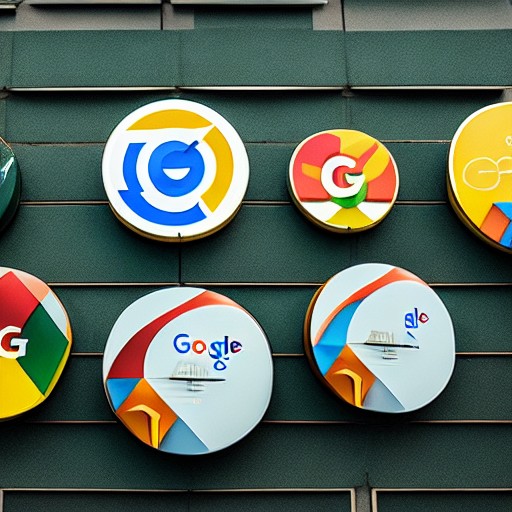With the outbreak of COVID-19, businesses were forced to halt operations and adapt to a new normal. Google was no exception – with advertising revenues falling drastically due to the pandemic’s economic impact. However, instead of succumbing to the challenges posed by these unprecedented times, Google came out on top! By revamping its advertising strategy and adapting it to meet changing consumer behavior, the tech giant has not only bounced back but transformed itself into an even more formidable player in the digital marketing space. In this blog post, we’ll explore how Google’s innovative approach has helped it recover from the pandemic slump and what this means for its future growth.
Google’s Slump in the Pandemic
The COVID-19 pandemic has had a significant impact on businesses worldwide, with Google being no exception. As a company that heavily relies on advertising revenue, the economic slowdown and business closures resulted in lower advertising spending and saw Google’s revenues take a hit.
In the first quarter of 2020, Alphabet (Google’s parent company) reported its slowest revenue growth in over five years. According to financial reports released by the company, Google’s ad sales went down by nearly eight percent during this period – an unprecedented decline for the tech giant.
The travel industry was one of the hardest-hit sectors due to lockdowns and travel restrictions enforced globally. With fewer people traveling, advertisers were less inclined to spend their money on ads related to tourism. Additionally, small businesses also pulled back on their advertising budgets as they struggled to navigate through these uncertain times.
As online user behavior shifted dramatically towards e-commerce platforms such as Amazon or Walmart during quarantine measures’ peak periods from March-June 2020; many digital marketers began focusing more attention there rather than search engines like Google. This further exacerbated Google’s slump in ad revenue during this time frame!
The Change in Advertising Strategy
To combat the effects of the pandemic on businesses worldwide, Google decided to change its advertising strategy. Instead of solely relying on keyword targeting, they shifted their focus towards audience targeting. This meant that advertisers could target specific people based on factors such as demographics and interests.
One reason for this shift was due to the changes in consumer behavior during the pandemic. People’s online habits had changed drastically, with many spending more time at home and using technology for work and leisure activities. By focusing on audience targeting, Google could better understand these changes in behavior and tailor advertisements accordingly.
Another benefit of this new strategy is improved ad relevance. Audience targeting allows for more personalized and relevant ads to be shown to users, increasing the chances of them engaging with or clicking through an advertisement. It also helps businesses reach potential customers who may not have searched for a specific keyword but are still interested in their product or service.
Google’s change in advertising strategy has proven successful thus far, with many businesses reporting positive results from utilizing audience targeting features.
The Results of the New Strategy
The new advertising strategy implemented by Google to recover from the pandemic slump has yielded significant results. One of the key changes was a shift towards digital marketing, as people were spending more time online due to lockdowns and remote work.
Google’s move to invest heavily in e-commerce advertising also paid off, with businesses turning to online platforms for their sales needs. The company introduced new ad formats and features that made it easier for customers to find products they needed.
Another crucial factor was Google’s focus on local ads, which helped small entrepreneurs stay visible during the crisis. By using location data and targeting specific regions, these businesses could reach out directly to potential customers in their vicinity.
Additionally, Google’s performance-focused solutions enabled advertisers to optimize campaigns based on real-time feedback and insights. This resulted in better ad placement and higher engagement rates.
All in all, Google’s revamped advertising strategy has proven successful not only for its own revenue but also for supporting struggling businesses during tough times. As we navigate through this uncertain landscape moving forward, it will be interesting to see how digital marketing continues evolving with changing consumer behavior patterns after the pandemic subsides.
What This Means for Google Moving Forward
What this means for Google moving forward is the potential for continued success and growth. By adapting their advertising strategy to meet the changing needs of consumers during a pandemic, Google has shown that they are able to pivot quickly when necessary.
One thing that this could mean is an increased focus on digital marketing tools and solutions. As more businesses shift their operations online, there will be a greater demand for services like Google Ads, which can help companies reach new audiences in a highly targeted way.
Another possible outcome is an even stronger emphasis on data-driven decision-making. With so much uncertainty in the world right now, having access to reliable data and analytics is more important than ever before. By continuing to invest in these areas, Google can help businesses make informed decisions based on real-world insights.
Ultimately, what this means for Google moving forward is continued innovation and adaptability. As consumer behavior evolves over time, it will be essential for companies like Google to stay ahead of the curve by offering cutting-edge solutions that can truly make a difference in people’s lives.
Conclusion
To sum it up, Google has been able to bounce back from the pandemic slump with its new advertising strategy. By focusing on digital ads and adjusting their approach to meet consumer needs during a difficult time, they were able to see significant growth in revenue and ad clicks. This successful pivot demonstrates the importance of adaptability and innovation in marketing strategies.
Moving forward, Google’s ability to remain flexible and continue adapting will be crucial for continued success in the ever-changing world of advertising. As consumers’ behaviors shift even further towards digital channels, mastering these platforms will be essential for any business looking to thrive.
In short, by recognizing the challenges presented by the pandemic early on and making changes accordingly, Google was able not only to survive but also grow in a time where many other businesses struggled. It serves as an important reminder that while difficult times can often seem insurmountable at first glance, creative solutions can help overcome them.










